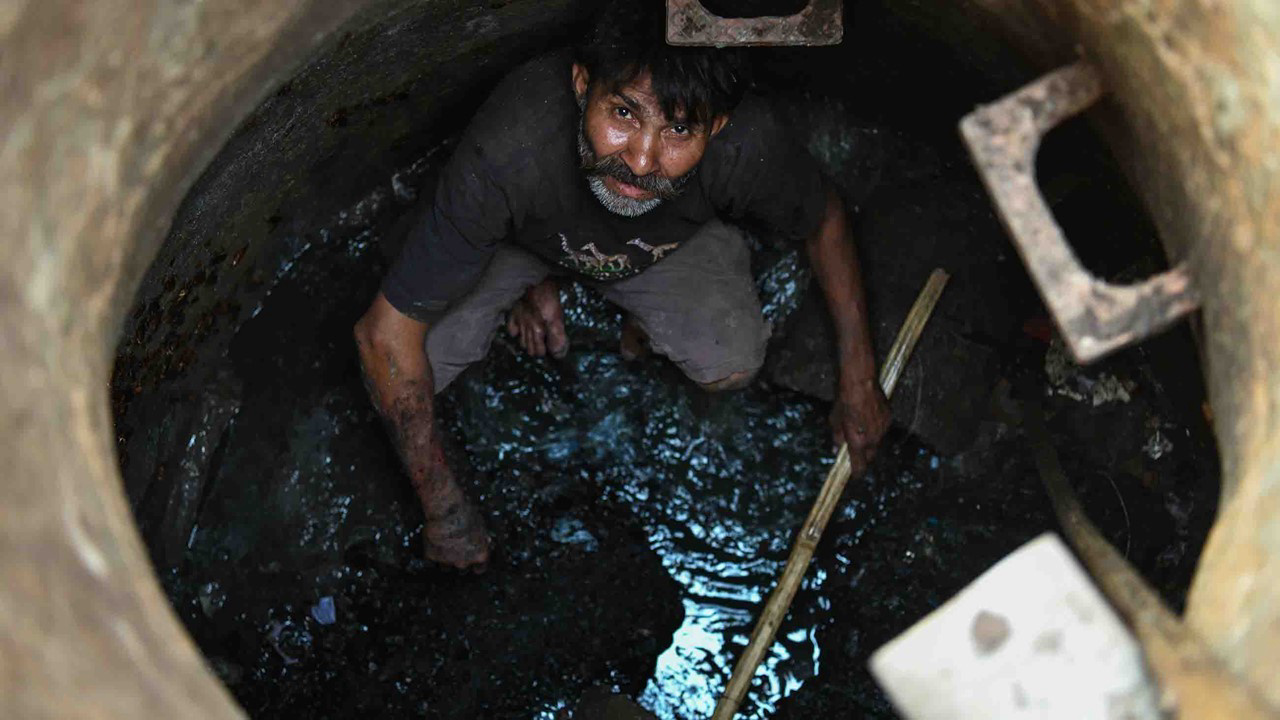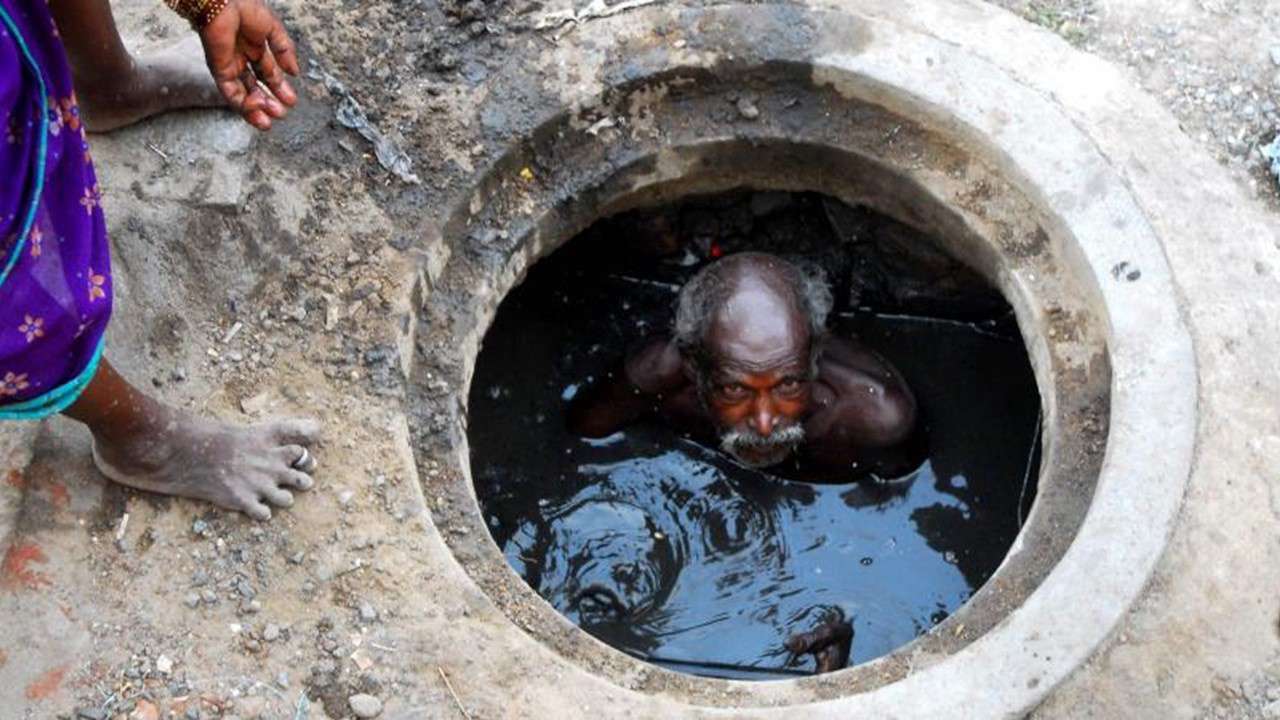 We all felt proud when we favoured India's “Swacch Bharat Abhiyan,” while we all believe that this is the right way for India to move forward. But ignoring the brutal realities of the millions of sanitation workers and manual scavengers who work across numerous sewers in urban and rural India and are essential in making the programme a success is not adequate.
We all felt proud when we favoured India's “Swacch Bharat Abhiyan,” while we all believe that this is the right way for India to move forward. But ignoring the brutal realities of the millions of sanitation workers and manual scavengers who work across numerous sewers in urban and rural India and are essential in making the programme a success is not adequate.
The issue of manual scavenging is not new and is deeply rooted in India’s caste system, which allocates jobs such as the cleaning of human faecal waste to people born in particular castes and communities. These span from the cleaning of septic tanks to maintaining and troubleshooting sewer systems in metropolitan areas, cleaning and maintaining public and community toilets, cleaning household latrines, cleaning public drains that often have faecal junk along with other unsafe elements. Men and women are contrarily engaged across sanitation work. Most men work as sewer cleaners and septic tank cleaners, whereas most women are engaged in latrine, railways, and school toilet cleaning. Women working in cleaning railway tracks or public gutters face unusual challenges because of work timings at night and the absence of empathetic female supervisors as well as easy access to restroom facilities.
Despite improving focus by the officials, unsafe sanitation work and manual scavenging still exist in India. There are five million people employed in sanitation work of some sort in India with about two million of them working in ‘high risk’ conditions. Attention has been brought to this issue for many decades. Leaders and Freedom fighters such as Mahatma Gandhi and B. R. Ambedkar have commented on this. However, these practices continue both in rural and urban India, where dry latrines still get cleaned and over the last few decades, in urban India, where men and women physically get inside sewer networks and septic tanks to clean blockages despite extreme hazards and risks. There are deaths daily, reported and unreported, and terrible social humiliation is a constant companion of these workers. National Commission for Safai Karamcharis (NCSK), a statutory body, released its data for all-India deaths in the first eight months of 2017. The NCSK data accounted for 123 deaths during January-August 2017, and it moves forward in a rising manner.
Recently, A News Service, Deccan Herald, published a report on January 1, 2020, of a tragedy that took place near Hub Mall in Goregaon (East), Maharashtra, India where two sanitation workers drowned in a sewage chamber in suburban Goregaon, the police said on Wednesday. The deceased were identified as Arunkumar Patel (43) and Manoj Goswami (41). The official said that according to the preliminary information, Goswami entered the sewage chamber to put some cleaning implements inside. When he did not return for twenty minutes, Patel followed him. When both failed to return, their colleague alerted the police. Both were found to have drowned inside. Case of accidental death was registered at Vanrai police station in Goregaon.
At another incidence, 3 workers also choked to death in the septic tank of 22-storey in Govandi, Maharashtra, India on Dec 24, 2019. According to a police official, the workers, hired privately, went inside an 8-ft septic tank in Maurya Society, a building in Govandi, to clean it around 1 pm. None had any safety gear. Residents say first aid was administered but it was too late by then and they were declared dead on arrival at the hospital. One of the worker's wife said, “We managed to earn just enough to run the household and take care of our children’s education. I am scared for my children’s future now. The eldest wanted to study and be a doctor. I don’t know if I will be able to help him.” (source - Mumbai Mirror)

According to another report of Mumbai Mirror, seventeen manual scavengers died in Maharashtra, the second-highest toll in the country, last year (2019), and none of their families has received any compensation.
As per the ministry, Maharashtra saw no deaths in 2015 but reported four in 2016 and seven in 2018. It has, however, admitted that compensation for the deaths in 2019. As per an order of the Supreme Court, a victim’s family should get an immediate compensation of Rs. 10 lakh.
These are just a few cases which were filed and registered, there are many other workers who live and die without any justice.
Social humiliation, financial insecurity, weak legal protection and health risks are the major challenges faced by these workers. They also face discrimination in healthcare, education, employment, access to land and wages. Lack of opportunities discourages them from moving away from this traditional form of occupation. Several manual scavenging workers that they were paid in food without any monetary transaction. Working in dangerous spaces gave major health challenges, while several manual scavenging workers have died from toxic gases, dizziness, fever, polio, skin burn, eye irritation. As our India is a developing country and we are getting technologically advanced. Some people are creating history by gliding in infinite space, but the irony is that some of us are vanishing in a darker place than space.
Its high time we take a note of the crucial voids in understanding the hardships of these labourers.
